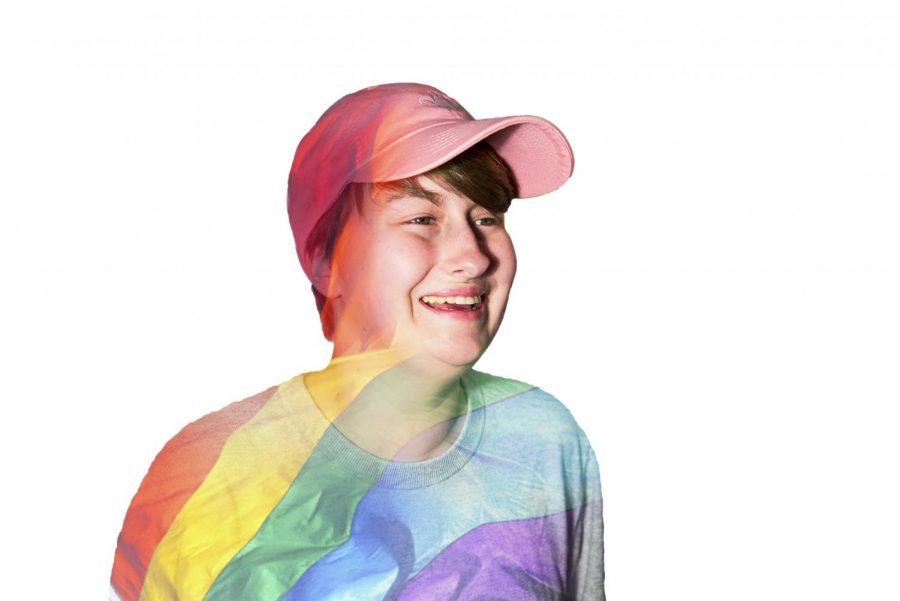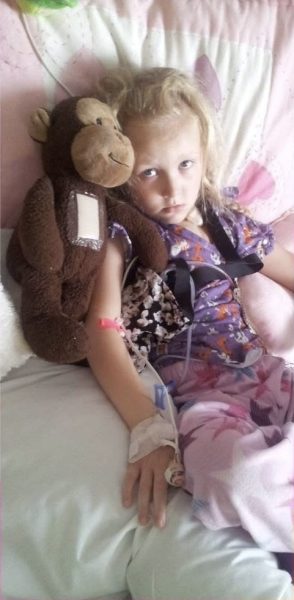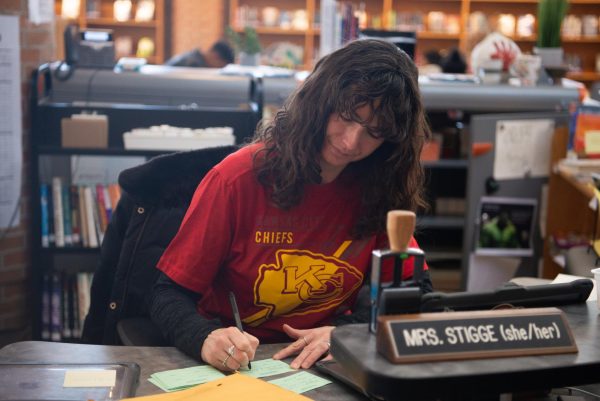Life in Color
May 11, 2018
As senior PJ Van Nieuwenhuyse made their way to their bedroom for a nap, their mom, Lisa Van Nieuwenhuyse attempted to lure them into the living room. PJ noticed that she had pushed furniture out of her way and was hula-hooping.
“PJ, come have a hula-hooping competition with me,” she sang. “I bet you can’t do this.”
During their freshman year, PJ noticed a feeling of discomfort when being referred to as ‘she’. Having grown up in a conservative, Catholic household, PJ didn’t even know that homosexual and transgender people existed for most of their life.
“I decided to start thinking about what else I would feel comfortable going by,” PJ said. “It was a lot of feeling it out. As soon as I understood what was, I was kind of like ‘Oh, hey, I think that’s me,’. Even as a kid, I’d fluctuate between super feminine and super masculine constantly.”
Now, PJ identifies as transmasculine (transgender, presenting as masculine) non-binary. With non-binary (not exclusive to masculine or feminine) comes with they/them pronouns.
“ to me, means that I’m looking like a boy, feeling like,who knows?; usually a boy, sometimes in the middle,” PJ said.
According to a nationwide survey by The Williams Law Institute at the UCLA School of Law, of 6,456 self-identified transgender and gender non-conforming adults aged 18 and over, 57 percent of non-conforming adults families choose not to speak to them after they came out. PJ’s immediate family has been accepting of their choices. When it comes to the rest of their family, that hasn’t been the case.
“Most of my family is pretty conservative, so some of them refuse to acknowledge it, but I don’t see them super often so it doesn’t really matter,” PJ said. “ realized that if they want to keep me in their life, they have to keep me in their life instead of who they thought I was.”
Many transgender and non-conforming people experience gender dysphoria; defined by the Oxford Dictionary as the condition of feeling one’s emotional and psychological identity as male or female to be opposite to one’s biological sex. For PJ, this occurs often, but mainly during their menstrual cycle.
“I wake up and instantly, it’s a day ruiner,” PJ said. “The whole week is hard, not just physically but mentally. It’s so horrible, like a lot of people, I get super bad cramps and nothing really helps, having to remind myself that I’m still a boy even though my body is doing this. It’s super difficult having a body that’s completely contrary to what I want it to be.”
Kansas did not have any laws that prohibit discrimination in employment based on gender identity for transgender and non-conforming people in the workplace. Forty-seven percent of LGBTQ+ respondents in Topeka reported, in another survey conducted by the WIlliams Law Institute, that they concealed their sexual orientation or gender identity at work out of fear of discrimination. Twenty four percent reported that they had witnessed someone being fired for those reasons and 41 percent reported that they had experienced verbal or physical abuse in the workplace.
“For a long time, job interviews were super weird and uncomfortable because they’d ask why I go by PJ and I wouldn’t know what to say,” PJ said. “I didn’t want to prevent myself from getting hired because I’m trans, because they’re allowed to do that. invalidated. It tears a lot of people apart. I’ve learned to deal with and it doesn’t really bother me all that much anymore. But for a lot of people, it’s not that way. They take that home with them.”
Growing up with a Catholic family, PJ attended church often. Since they began their transition, they’ve faced criticism at church, and no longer attend.
“God should love everybody, right? Why would it be different for me? I don’t think that God hates anybody,” PJ said. “At its core, religion is about caring about other people and helping them to better the world and better . I don’t think that it should be a priority in churches or religion in general to put people down.”
Despite many negative experiences, PJ maintains a positive attitude and a normal life.
“Northwest has a great community, I am so thankful that I go to this school,” PJ said. “It doesn’t matter what some ignorant person in one of my classes thinks. I know who I am, and the people who actually love and care about me know who I am. At the end of the day, that’s all that matters.”
After a long day, PJ carefully removed their chest binder, which flattens breast tissue to create a male-appearing chest. This helps them keep gender dysphoria at bay.
“I’m just a regular person. I wake up, I eat, I turn my homework in late, I’m exactly like anyone else except I wear a binder, I’m gay, I’m trans, whatever. I’m not that different. It’s just a couple of small things, and everybody has a couple of small things that make them weird or different.”
Copy and paste this link to view an infographic with more information on the story.









